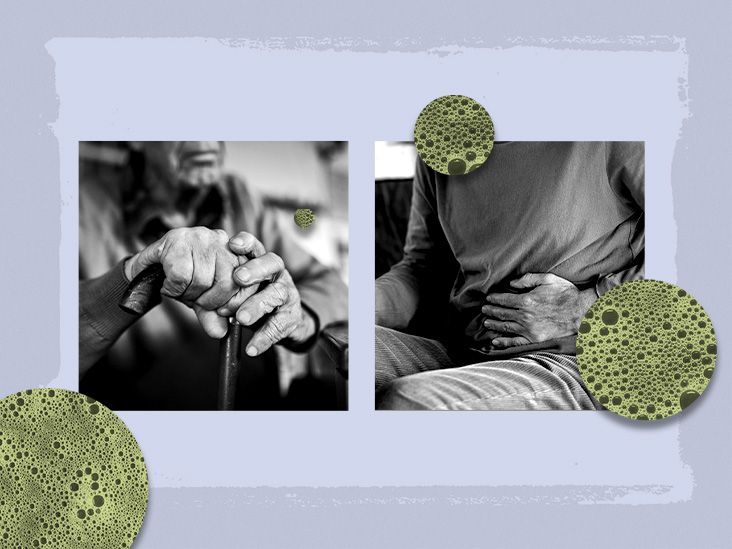There are several types of dietary fat, and some fats are more healthful than others. Saturated and trans fats tend to be associated with more health risks, while unsaturated fats are associated with more health benefits.
Fat is an important macronutrient. It is essential for several bodily functions and serves as an energy source.
However, not all dietary fats are equally beneficial:
- Saturated and trans fatscan raise cholesterol levels and increase disease risk.
- Unsaturated fats support health and may be monounsaturated or polyunsaturated.
Meats, dairy products, snack foods, and baked goods contain saturated and trans fats. Some sources of unsaturated fats include nuts, oils, seeds, and avocados.
This article examines the different types of fats, including which are most healthful and which foods contain them.

There are various types of fats, classified according to their attributes:
- Fats: The structure of a fat is a triglyceride, which is glycerol (a form of glucose) with three fatty acids attached. These fatty acids can be saturated, monounsaturated, or polyunsaturated.
- Lipids: Lipids are fatty compounds, including triglycerides, steroids, and phospholipids.
- Oils: This can describe any fat that is liquid at room temperature.
- Animal fats: These include the fats in butter, cream, and meats, such as lard.
- Vegetable fats: These include the fats in olives and avocados, as well as olive, peanut, flaxseed, and corn oils.
Fats are an important part of the diet that provide energy for humans and many other animals.
According to the American Heart Association (AHA), all fats have the same number of calories —
The following sections take a closer look at the effects of various fats on the body.
Saturated fats are solid at room temperature and are sometimes called solid fats. The basic carbon structure of these fatty acids is “saturated” with hydrogen atoms.
Saturated fat may increase health risks if a person consumes too much over a long period.
A high intake of saturated fat may eventually raise levels of low-density lipoprotein (LDL) cholesterol in the body. This, in turn, increases the risk of cardiovascular disease and stroke.
The AHA recommend that people eat
A healthcare professional may be able to provide more specific advice about how much saturated fat to consume per day on an individual basis.
Some sources of saturated fat include:
- meats and meat products
- dairy products, except those that are fat-free
- processed foods, including baked goods, snack foods, and french fries
- some vegetable oils, including coconut oil, palm oil, and cocoa butter
Older
Instead, a person should consider replacing sources of saturated fat with unsaturated fat, such as:
- nuts
- seeds
- avocados
- beans
- whole grains
- vegetables
Unsaturated fats are liquid at room temperature, and they mostly derive from plant oils. Healthcare professionals often consider these to be “good” fats.
The two main types of unsaturated fat are:
Monounsaturated fats
Monounsaturated fat has one carbon atom in the chain that is not fully saturated, or bonded, with hydrogen atoms.
The AHA notes that monounsaturated fats
However, simply adding monounsaturated fat to the diet will not have this effect unless a person also reduces their saturated fat intake.
Many health professionals report that a diet rich in monounsaturated fats may also reduce a person’s risk of heart disease.
Sources of monounsaturated fats include:
- olives and olive oil
- nuts and nut butter
- avocados
Polyunsaturated fats
Polyunsaturated fat molecules have 2 or more carbon atoms in the chain that are not fully bonded with hydrogen atoms.
The AHA reports that polyunsaturated fats can also
Omega-3 is a polyunsaturated fatty acid naturally present in fatty fish and certain nuts and seeds. The
That said, a large-scale 2020 analysis found that omega-3 supplements had no significant benefits for heart health. Determining the effects with certainty will require further research.
Another type of polyunsaturated fats are omega-6 fatty acids. These mainly occur in vegetable oils, processed foods, whole grains, nuts, and seeds.
Sources of polyunsaturated fats include:
- oily fish, such as sardines, mackerel, trout, salmon, and herring
- safflower, grapeseed, soybean, and sunflower oils
- nuts and seeds
- eggs, although they also contain a small amount of saturated fat
Nutrition resources
For more science-backed resources on nutrition, visit our dedicated hub.
According to the AHA, trans fats can be
Another name for trans fats in processed foods is partially hydrogenated oils.
Trans fats are not essential, and they can have damaging health effects.
Trans fats raise levels of LDL cholesterol and lower levels of HDL cholesterol. This increases the risk of heart disease, stroke, and type 2 diabetes.
The World Health Organization (WHO) notes that trans fats increase the risk of death by any cause by
Trans fats became popular when food companies found them easy to use and cheap to produce. They also have a long shelf life and can give food a nice taste.
Trans fats can be used many times in commercial fryers, so they have become common in fast-food chains and other restaurants.
However, the WHO has called on governments to eliminate trans fats from the global food supply. Most commercial food production companies have now eliminated trans fats from their products.
Sources of trans fats can include:
- fried foods, such as french fries
- doughnuts, pies, pastries, biscuits, and other baked goods
- pizza dough, cookies, and crackers
- stick margarine and shortenings
- packaged foods
- fast foods
If any ingredient list on food packaging includes “partially hydrogenated oils,” it means that the product contains trans fats. Additionally, many manufacturers have replaced trans fats with saturated fats, such as palm oil or palm kernel oil, in products with a long shelf life.
According to the
- total fat intake should be less than 30% of total caloric intake
- saturated fat intake should be less than 10% of total caloric intake
- trans fat intake should be less than 1% of total caloric intake
The AHA notes that healthcare professionals
Not all fats are equally beneficial.
Eating large amounts of saturated and trans fats can have adverse health effects, such as raising LDL cholesterol levels. Limiting intake of saturated and trans fats, and replacing them with polyunsaturated and monounsaturated fats, may help prevent these adverse health effects.
A person should speak with a healthcare professional, such as a dietitian, before making significant changes to their diet. A healthcare professional can work with a person to help make sustainable changes to their diet that allow them to continue making meals they enjoy with modified ingredients.


